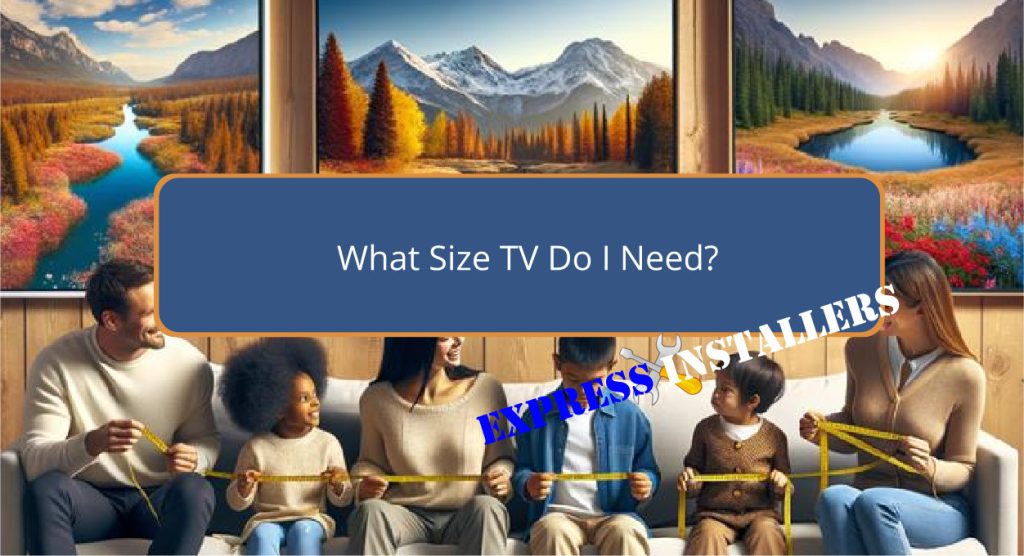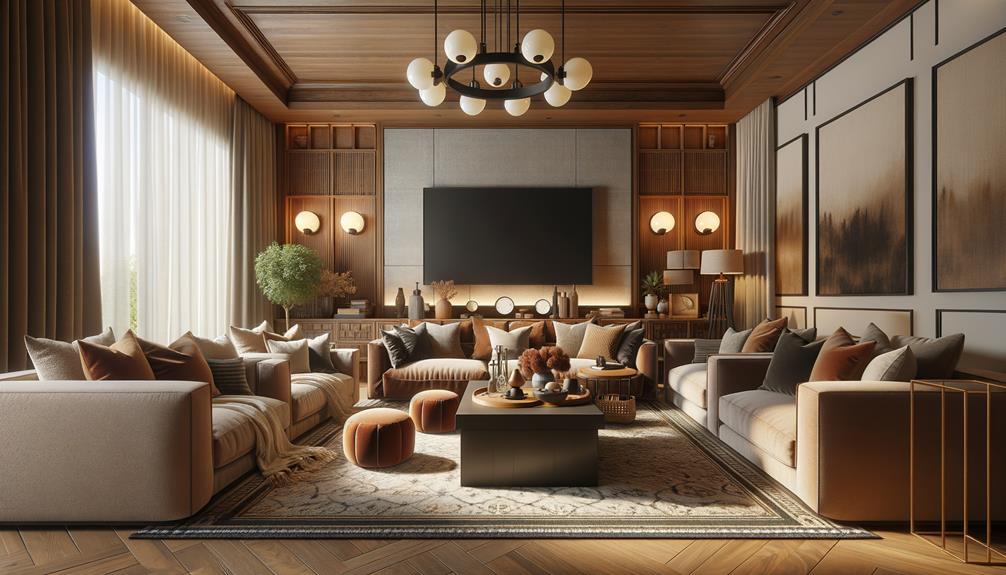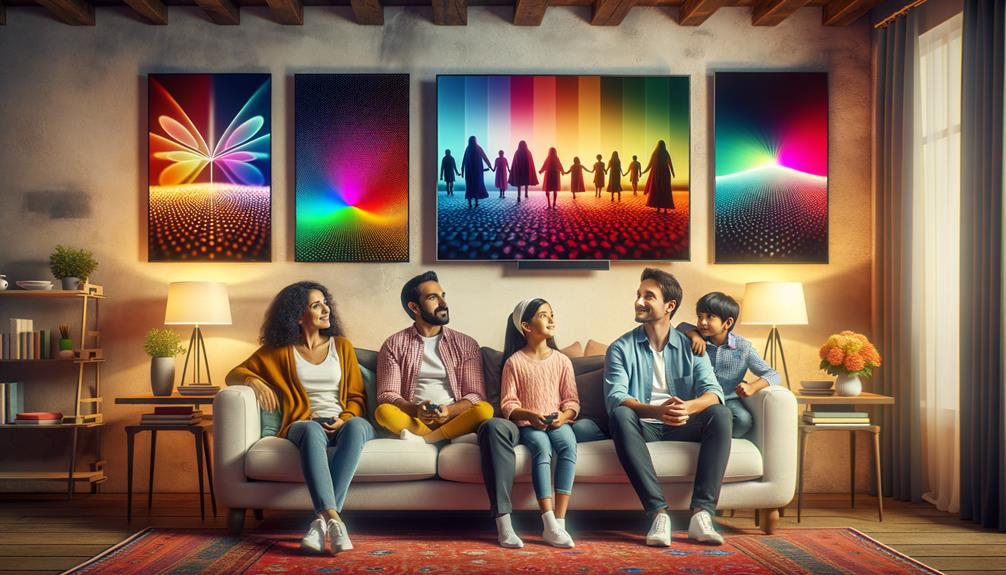
Selecting the best TV size hinges on the interplay between viewing distance and the room’s spatial characteristics.
Generally, screen sizes are measured diagonally from corner to corner, giving a uniform metric for comparison across models.
The viewing distance should ideally be 1.2 to 2.5 times the screen’s diagonal measurement, particularly to maximise the benefits of higher resolutions such as 4K or 8K, which offer more detail and sharper images.
Larger rooms might accommodate bigger screens without overwhelming the space, while smaller settings could benefit from more compact models.
Proper sizing enhances viewing comfort and overall experience, paving the way for further exploration of personalized home entertainment setups.
Quick Summary
- Measure the viewing distance in your room to determine the ideal TV screen size.
- Consider the resolution; larger screens typically require higher resolutions for clear images.
- Evaluate room layout and furniture placement for optimal TV positioning and viewing comfort.
- Choose a TV technology that suits your viewing preferences, such as OLED for contrast or QLED for brightness.
- Ensure the TV size balances well with the overall dimensions of the room to maintain aesthetic harmony.
Understanding TV Screen Sizes
When selecting a television, understanding that screen sizes are measured diagonally from corner to corner is essential for making an informed choice suitable for your space.
This diagonal measurement provides a uniform standard for screen size comparison, enabling consumers to accurately evaluate the dimensions of various TV models.
As TVs evolve, the range in sizes has expanded greatly, from modest 32-inch models suitable for smaller rooms to expansive 98-inch screens designed for large spaces.
Correctly evaluating the screen size in relation to the best viewing distance enhances the viewing experience by ensuring that details are visible without causing strain to the eyes.
This consideration is important in leveraging the advancements in display technology for maximum enjoyment.
Importance of Viewing Distance
Understanding the significance of ideal viewing distance is fundamental to enhancing your television viewing experience, as it directly impacts both picture quality and eye comfort.
Here are the critical considerations:
- Optimal Distance: The recommended viewing distance varies by TV size and resolution. For example, closer distances are suitable for high-resolution displays such as 4K TVs.
- Eye Comfort: Proper distance reduces the risk of eye strain by allowing the eyes to comfortably focus on the entire screen without excessive movement.
- Picture Quality: Maintaining the appropriate viewing distance enhances perceived sharpness and detail, preventing pixelation.
- Comfort Level: An adequate viewing distance fosters a more immersive experience without compromising comfort, allowing longer viewing sessions without discomfort.
Room Layout and TV Placement

Considering the size and layout of your room is essential when determining the ideal placement and size of your television to guarantee an excellent viewing experience.
Furniture arrangement plays a pivotal role; the television should be accessible and visible from all seating areas without requiring uncomfortable angles or distances.
Additionally, lighting conditions greatly influence visibility and eye comfort. Position the TV to avoid glare from windows or bright lights, which can detract from the viewing experience.
TV Wall mounting offers a strategic advantage, allowing for ideal positioning and height adjustments, thereby enhancing the overall setup.
It is vital to balance the TV size with room dimensions, ensuring the screen neither overwhelms nor feels too small for the space.
Impact of Screen Resolution
Screen resolution is a critical factor in determining the clarity and detail of the images displayed on a television, directly influencing the viewer’s visual experience.
Higher resolution enhances resolution clarity and reduces pixel visibility, producing a more immersive viewing experience.
- Resolution and Screen Size: Larger screens require higher resolutions to maintain clarity. Where 720p suffices for small screens, 4K resolution is ideal for larger TVs to avoid visible pixels and guarantee fine detail.
- Detail Distinguishability: 4K and 8K resolutions greatly enhance the ability to perceive minute details compared to 720p or 1080p, offering a sharper, more defined image.
- Premium Visual Experience: 8K resolution provides the highest level of detail and clarity available, setting a benchmark for premium viewing experiences.
- Comparative Clarity: Moving from 720p through 1080p to 4K and 8K shows a progressive enhancement in image sharpness and reduction in pixel visibility, catering to various viewer needs and preferences.
Choosing Between TV Technologies

When selecting a television, understanding the differences between TV display technologies is essential for making an informed decision tailored to your viewing preferences.
In the debate of OLED vs QLED, OLED TVs are renowned for delivering superior contrast with truly deep blacks, making them ideal for cinephiles and gamers alike.
On the other hand, QLED TVs stand out with their capability to produce bright colors and high brightness levels, which enhances the viewing experience in well-lit environments.
Additionally, Mini-LED TVs bring notable Mini LED benefits, including enhanced contrast and more effective local dimming, which significantly enhances picture quality over standard LED TVs.
Each technology caters to different viewing needs and preferences, making choice important.
Additional Considerations for Purchase
Having explored the various TV technologies, it is equally important to take into account the practical aspects of your environment and how they influence the choice of TV size.
Considerations extend beyond mere dimensions to include:
- Room Layout and Seating: Analyze the layout and seating arrangement to guarantee optimal viewing distance and angles for the size of the TV being considered.
- Mounting Options: Assess the compatibility of the TV with existing furniture or wall spaces, prioritizing ease of installation and stability.
- Viewing Preferences: Tailor the choice towards the viewing habits and content preferences of the primary users, whether for gaming, movies, or regular viewing.
- Surround Sound Setup: Plan for integration with surround sound systems, ensuring the audio experience complements the visual scale and quality.
Frequently Asked Questions
How Do You Determine What Size TV to Buy?
To determine the suitable TV size, analyze viewing angles and resolution considerations relative to your room’s dimensions. Ideal size enhances visual clarity and viewer comfort, balancing immersive experience with space constraints.
How Big Should Your TV Be Based on Room Size?
When determining TV size based on room dimensions, consider viewing angles and wall mounting options. Proper size enhances visual comfort and room aesthetics, ensuring an immersive viewing experience without overwhelming the space.
How Far Should I Sit From a 55 Inch TV?
For ideal viewing comfort and to minimize eye strain, it is recommended to sit approximately 11 to 12 feet away from a 55-inch TV. This distance enhances picture clarity and viewer immersion.
How Far Should I Sit From a 65 Inch TV?
For guaranteed viewing comfort and resolution impact, the perfect distance to sit from a 65-inch TV is approximately 9 to 10 feet. This assures a clear, immersive viewing experience without eye strain.
Conclusion
To sum up, the determination of the best television size depends on a combination of factors including viewing distance, room layout, screen resolution, and television technology.
A methodical assessment of these dimensions guarantees an enhanced viewing experience.
Thus, careful consideration is crucial for achieving both aesthetic harmony within the living space and technological satisfaction.
Prospective buyers are advised to integrate these elements to make an informed decision that aligns with their viewing preferences and spatial configurations.
